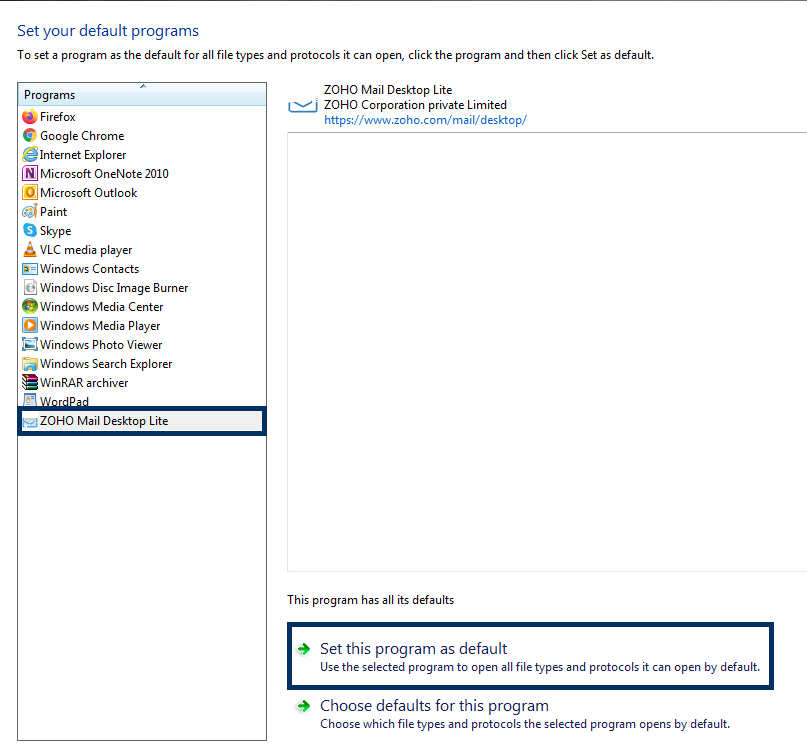

- #Chrome change default mail client windows 7 how to#
- #Chrome change default mail client windows 7 update#
- #Chrome change default mail client windows 7 code#
- #Chrome change default mail client windows 7 password#
This may seem like a First World problem, but it can be a real nuisance if your work depends on a lot of online communication. Unfortunately, most operating systems don’t use Gmail by default, so you’ll have to change the default mail client yourself. Mailto links are hyperlinks that automatically take you to your email client with the recipient email address already entered, so it can be an issue if your default email handler isn’t your preferred one. It happens to everyone: you click on a mailto link in your browser, and it opens in your computer’s default email client instead of Gmail.
#Chrome change default mail client windows 7 how to#
#Chrome change default mail client windows 7 password#
#Chrome change default mail client windows 7 code#
Edit it, and paste in the code I showed you above. Do it by right clicking and creating a new text file. I suggest you create your computer configuration login script right here. Click on browse – this will bring you directly where the computer scripts default to. This will open a window that allows you to type the name of the script, and parameters. When the properties window shows up, click on Add. When you select it, you will see Startup, and Shutdown on the right. Otherwise it will be run in the context of the user, and it will fail if they are not an administrator. Make sure you do this under Computer Configuration not User Configuration. I am going to open the group policy for my collection of machines I want to update, and drill down toĬomputer Configuration -> Windows Settings -> Scripts
#Chrome change default mail client windows 7 update#
The big question now is how can I update when most of my users are not an administrator? You could just as easily set it to Outlook Express. In our example we update the machine’s default email client to Microsoft Outlook. d – Following this argument is the data we want to set ve – this tells it to set the (Default) value for this key If you are wondering about the command line options – Reg add HKLM\Software\Clients\Mail /ve /f /d “Microsoft Outlook” Using the REG command, we create a simple script that looks like this: It has been built into windows since XP, and can be added to 2000 by installing the Windows 2000 Resource Kit. If you don’t know about it, the REG command allows you to update the registry from the command line. The first step in setting it across our network is to figure out how to set it from the command line. In other words it might cause some applications to do crazy stuff when trying to access email (If you set it to a client you have not installed on the machine already). The behavior of windows is undefined if you set it to something that is nonexistent. Now, obviously the email client must exist for you to set it.

If you drop down to this in the registry, you can see that the ‘default’ value on the right is what sets the default email client. Here is the key for setting the default email client: If you create one on your own, windows will simply ignore it.

This is because the setting is located in the HKEY_LOCAL_MACHINE hive of the registry, and there is no corresponding HKEY_CURRENT_USER entry. If you go back into the settings, it will have reverted back to the original default email client. Unfortunately it does not give you an error. If you are not an administrator, windows will gladly let you go into the internet settings under the control panel – and make the change: What I mean is – I thought if ‘USER A’ logged in, set the default email client…then ‘USER B’ could login to their account and set their own default email client.Īfter testing many different ways I have found that it does not work this way at all. When I first started doing the groundwork for this article I incorrectly assumed that the default mail client was a setting that each user could change in Windows.


 0 kommentar(er)
0 kommentar(er)
